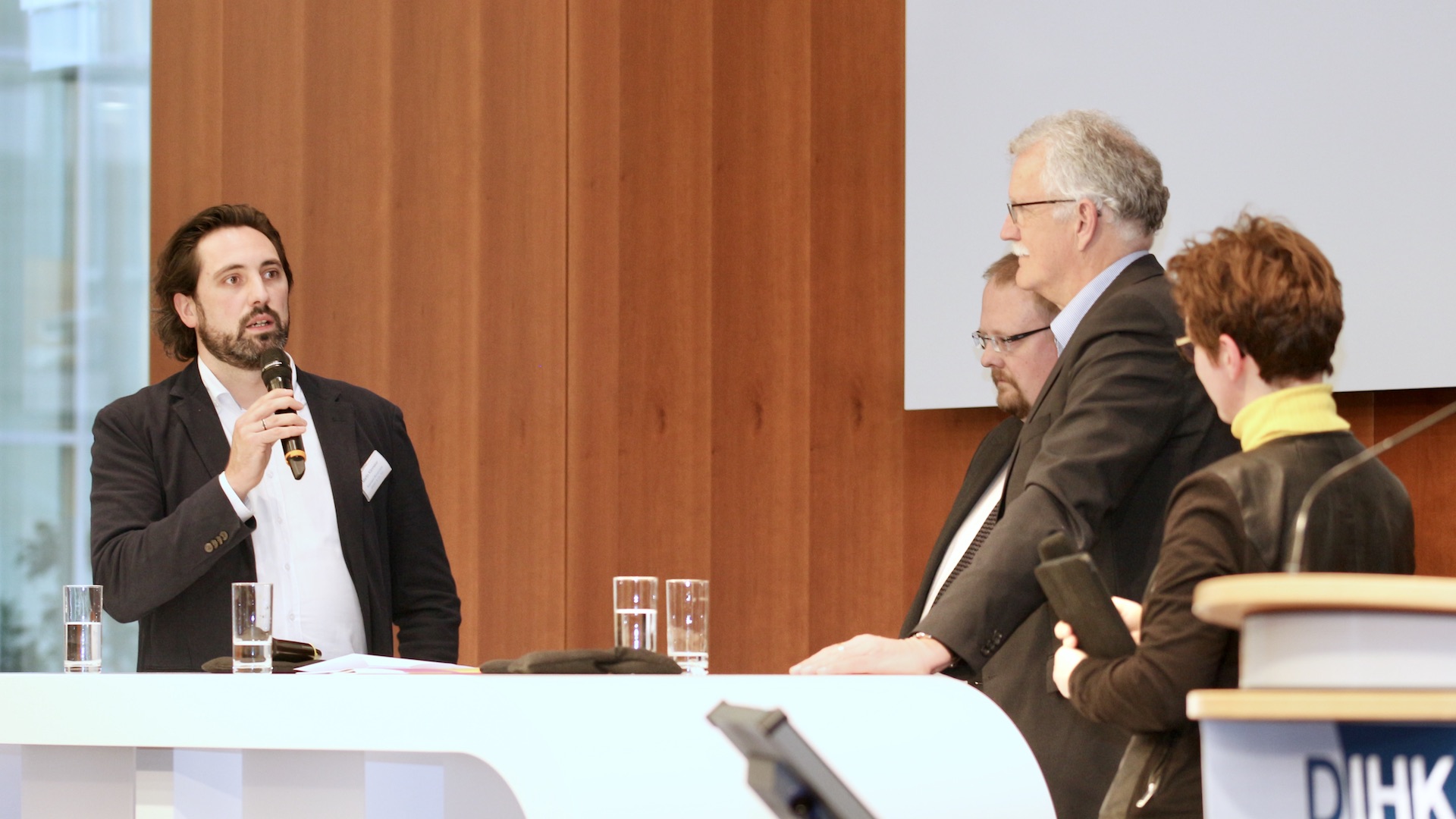
Synergies between EMAS and DNK
ASSMANN Sustainability Manager Martin Könneker contributed our expertise on the topic of sustainability to a panel discussion at the House of German Economy
At the invitation of the German EMAS Advisory Board (UGA) at the Federal Ministry for the Environment, an expert conference on the topic of sustainability took place at the end of October. Around 90 guests came to the Association of German Chambers of Industry and Commerce (DIHK) at the German EMAS Advisory Board in Berlin to share ideas on the results of a recent study on interfaces between the EMAS environmental management system and the German Sustainability Code (DNK)
ASSMANN Sustainability Manager Martin Könneker was present as a panel speaker to provide important insights into our sustainability management. “We are definitely a pioneer in the field”, emphasises Könneker. “After all, we were one of the first companies to be registered on the German EMAS register and the first office furniture manufacturer to announce our declaration to DNK as well as our sustainability report according to GRI (Global Reporting Initiative).” The aim of the event was both to provide information on synergies between EMAS and DNK and to discuss effective routes to sustainable economic activities.
ASSMANN as a pioneer in EMAS registration
Background: We have been recorded on the EMAS register since 1996. Voluntary registration is valid for three years. The environmental declaration, which is submitted every year with new aims and measures, must then be validated by environmental experts. This has just taken place, meaning that ASSMANN is registered for another three years. EMAS stands for “Eco-Management and Audit Scheme” and was developed by the European Community to create standards for companies and organisations that are demonstrably seeking to improve their environmental performance. It is therefore the world’s most demanding system for environmental management and environmental audits. In the registration process, an important roll is played by the UGA, which brings together various interest groups in the field of environmental management and actively supports the implementation and spread of EMAS.
Creating interfaces between DNK and EMAS
The latest UGA event was based on the “Interfaces between DNK and EMAS – a formula for sustainable success?” study, which looked to find the synergetic effects of implementing both systems. Experts agree that EMAS covers the environmental criteria of the sustainability index. “In the end, these even go beyond the ISO 14001 environmental management system and place particular importance on compliance with environmental regulations and the improvement of the environmental performance of participating companies”, explains Könneker, who presented approaches to environmental and sustainability management at ASSMANN in his contribution to the discussion and went into great depth regarding the combination of EMAS and DNK at our company. His recommendation was to connect both systems. This makes EMAS an efficient instrument in the determination and implementation of the compulsory obligations of environmental requirements. DNK declaration on the other hand offers a broader approach to all areas of sustainability, with initially lower costs for companies and only a formal reporting assessment. Nevertheless, incentives are offered to repeatedly present sustainable economic activity in a positive manner in follow-up reports.
Risk of greenwashing?
Könneker therefore sees the combination of both systems and/or an optional expansion of EMAS as predominantly positive as this creates transparency and makes companies’ commitment to sustainability more transparent. In response to critics fearing that requirements will become more lenient and EMAS will therefore be diluted because of a combination with DNK declaration, the Sustainability Manager replied: “If the technical requirements of EMAS are observed and the additional sustainability efforts in similar contexts are incorporated during the connection process, a comprehensive system can be achieved, which can also be adapted to meet the individual needs of the reporting companies. The compulsory external assessment can then prevent abusive greenwashing (the pure presentation of sustainability efforts without substance in corporate activity) and the loss of credibility that is associated with this. Another advantage of such a combination is the creation of uniform standards. Both EMAS environmental declaration and DNK declaration are based on GRI. All topic-specific standards of the environment series (GRI 300) are handled by EMAS, but DNK also uses GRI indicator sets.
This was the conclusion of the latest UGA event: DNK will be easier to use for those who have already started with EMAS, as the EMAS processes, structures, information and data can be used to produce reports. It’s a good thing that here at ASSMANN, we were at the very forefront from an early stage with our sustainability reports according to GRI, EMAS and DNK declaration!